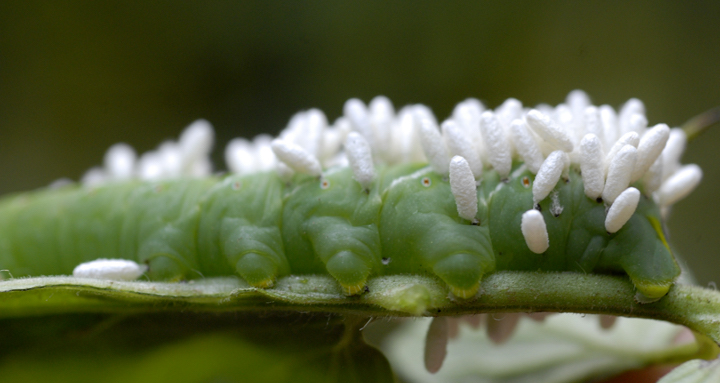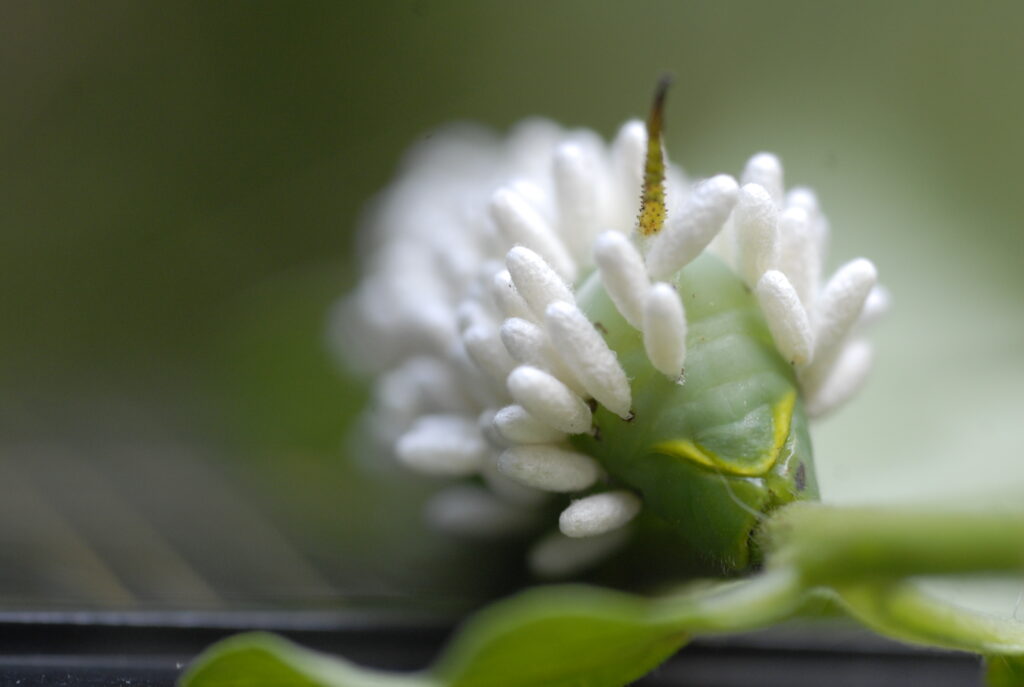Ask Doug: Don’t kill this hornworm, crape myrtle hardiness and when to move iris

I’ve had lots of questions about tomato hornworms with rice like growths.

Doug says-
They can be hard to find. Usually gardeners will notice missing foliage and the droppings of the caterpillar. It won’t be far from either place, but the pest is brilliantly camouflaged. They can be picked off easily by hand. I used to put them in a jar with air holes in the lid along with some more foliage and send them into school.
If one is found with rice like cocoons on the worm, don’t kill it. These are parasitic wasps that will feed on the hornworm. By the time the cocoons have appeared, the worm is probably done feeding or will be soon.
Never kill a tomato hornworm that has these rice-like cocoons on the worm.
By leaving the caterpillar alone, it will perpetuate the parasitic wasps, which will help control the pest year after year. Good bugs eating the bad bugs is a good thing about being an organic gardener.
Pat asks-
I planted a crape myrtle shrub this spring. So far it is doing good. I am worried about getting it to over winter here. Do you have any advice for keeping it alive? It is in an open area of the yard. Thanks
Doug says-
One thing that I do with my hydrangeas to stop their buds from freezing out is to surround the plant with tall tomato stakes and then burlap. The top is left open. It would give the plant some protection, but it’s not going to look great. Don’t fret too much, even if the temperatures get too cold for the plant, it will be killed to the ground, but they sprout from the roots. In that case it will take longer to bloom.
Ray asks-
Is this a good time to separate and transplant Siberian iris? Any tips I should know about?

